ULI Chicago Fellows Share Key Takeaways from the ULI Spring Meeting - Americas: ULI Chicago (original) (raw)
Our 2023-24 ULI Chicago Fellows recently had the opportunity to attend the 2024 ULI Fall Meeting in New York, New York.
Here are a few of their key takeaways:
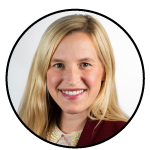
Molly Rutkowski | PGIM Real Estate 2023-24 Women’s Fellow
As the ULI Chicago Women’s Fellowship recipient, I had another opportunity to attend the Spring Meeting in New York in April and once again join the End User Council for their day of specialized programming and events. Despite having sat in on the End User Council’s programming at the Fall Meeting, the excitement and novelty of the experience does not get old. Being surrounded by such a distinguished and accomplished group of individuals is inspiring, and it was also great to reconnect with familiar faces!
While the Spring Meeting may seem on paper like an abbreviated version of the Fall Meeting, ULI still manages to condense a plethora of content into just 3 short days. Days are dense and busy, but full of fascinating content and great networking!
The meeting kicked off with a showstopper – a fireside chat with Former Secretary of State Hillary Clinton. I have never seen a ULI event more packed, with standing room only in a room already set up to accommodate thousands! After kicking off the Spring Meeting, Secretary Clinton entered the stage and spent the next hour discussing topics that ranged from political and economic policy, to global unrest in the world today, and the skills needed to make difficult decisions under immense pressure. Setting personal politics aside, Secretary Clinton shared a captivating narrative on her experiences dealing with tense negotiations, difficult decisions of national security, and dealing with the occasional bully. Her professionalism and accomplishments are unequivocally unmatched, but it was her wit and self-deprecating humor that kept the conversation light and refreshing.
After starting the meeting with a bang, the momentum continued on through the next two days of events and presentations. Each year there are always a few key themes that are intertwined throughout the Meeting, and this year was no exception. Common themes this Spring included the concept of the “15-Minute City”, multi-faceted sustainability, and the fact that we are all very tired of talking about “Return to Work”, but it continues to haunt the office sector.
There were many presentations focused on creating or fostering the concept of a “15-Minute City” – the urban planning concept that an individual should be able to access all necessities within 15-minutes of their home by walking, biking, or public transit. This concept in-itself fosters a sustainable community (another frequent theme of the Meeting), and there were many fascinating presentations on how this is being targeted in different locations. Chicago was no exception, and I had the pleasure of sitting in on a presentation by Chicago’s own Eleanor Gorski highlighting how transit-oriented development and the 15-Minute City are being implemented in Chicago neighborhoods.
Lastly, the topic we all love to hate – Return to Work. This was THE hot topic amongst the End User Council at the Fall Meeting, but by this Spring, the Council (along with most of us in the industry) were exhausted by it. However, the unfortunate reality is that it’s something that is still deeply woven into the uncertainty of the office sector and the future of many downtown submarkets today. Instead of continuing to belabor the depressed statistics, many presenters took a creative approach to the topic and instead focused on how we can foster intentional interaction, collaboration, and rethink WHY we use the office (not necessarily HOW we use an office). After several years of slogging through the post-covid office world, there is a definite sense of optimism creeping back into the office atmosphere.
Thank you again to ULI Chicago and WLI Chicago for giving me this incredible opportunity. This Spring in New York was once again an experience that was professionally rewarding, intellectually stimulating, and just plain fun! I look forward to passing the torch on to the next Women’s Fellowship recipient to hopefully have as incredible of an experience as I have had!
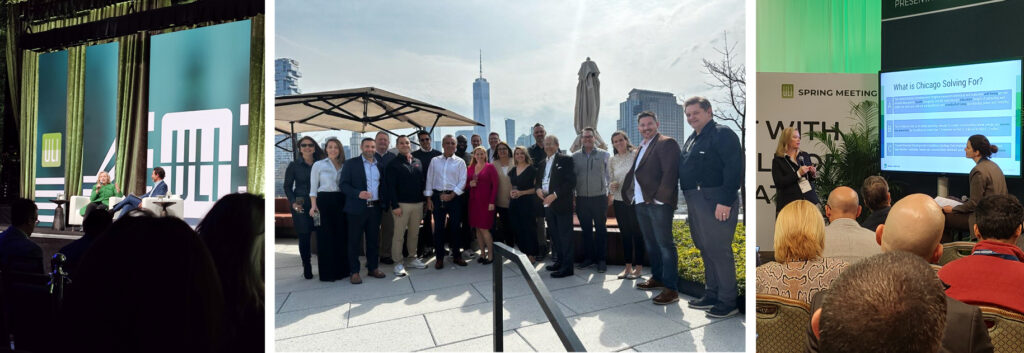
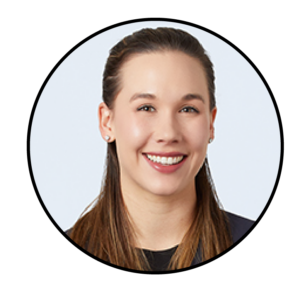
Jane Acker | Farpoint 2023-24 Jeffrey Kahan Fellow
One of the central themes of conversation across my ULI Spring Meeting experience was the power of narrative. We are all trying to figure out what’s coming and what to do about it, bringing our heads out of day-to-day work and together to think bigger and share stories. However, it wasn’t until my final conversation of the day with Corey Hall of KKR and Matt Field, CEO of TMG Partners, when Matt quoted Argo, that the lightbulb went off: “There are only bad options.” “You don’t have a better bad idea than this?” “This is the best bad idea we have, sir.” Matt told me to focus on why, not what. This is the message I took away from my experience as a 2023–2024 ULI Chicago Kahan Fellow.
In my three days, I attended many sessions at the conference, held meetings with new and old connections, and wined, dined, and tuned in for the riveting IOPC discussions on Wednesday night, leading into Thursday’s council day. On Wednesday, the Full Member Luncheon hosted NY Times bestselling author, Bruce Feiler, who spoke about the new way to craft meaning in life with transition and change as constants. For those of us raised in Western or Anglo-Saxon cultures, it feels especially difficult to craft meaning without expectations of linearity.
This break is precisely what the market seems to be calling me and many others in our industry to embrace. As David Bitner, Newmark’s Global Head of Research, said more glibly, we need to “learn to love the vol.” How do we make meaning when there is so much noise in the market and a dearth of transaction activity? There is a wide gap between the people following macro trends with trepidation and the doers on the ground converting office to residential, charging ahead with alternatives like industrial outdoor storage, and raising funds to attack the climate crisis via carbon neutrality. Yes, I actually had the pleasure of speaking to people at ULI who are doing this stuff, figuring it out in real time, and creating and validating the stories that we all speculate on. It seems to me that the people creating the data points are the ones in control of the evolving market narrative.
Real estate owners, operators, developers, and capital allocators—we are all at a point of reinvention. I am moving out of the lowest-rate environment I’ll likely ever see and into a repricing of risk, a reconsideration of the desirables and undesirables, and a massive demographic shift—aging population, struggling cities, population exodus to the Sunbelt, and on and on. I am moving from a world where I measured success in marks on the board to keeping plates spinning to mitigate risk as best I can. We are all experiencing a shift change.
So far, the real estate market has shown resilience, and I hope I can say the same about my work across investment functions during this time. A large part of my passion for real estate relates to what first piqued the interest of Nancy Lashine, Founder and Managing Partner of Park Madison Partners: “the most interesting people were in real estate.” Leaders in our field build relationships and stories that shape cities. Those with a compelling enough why (and ability to execute) get to build the what! And this inspires me to keep fighting.
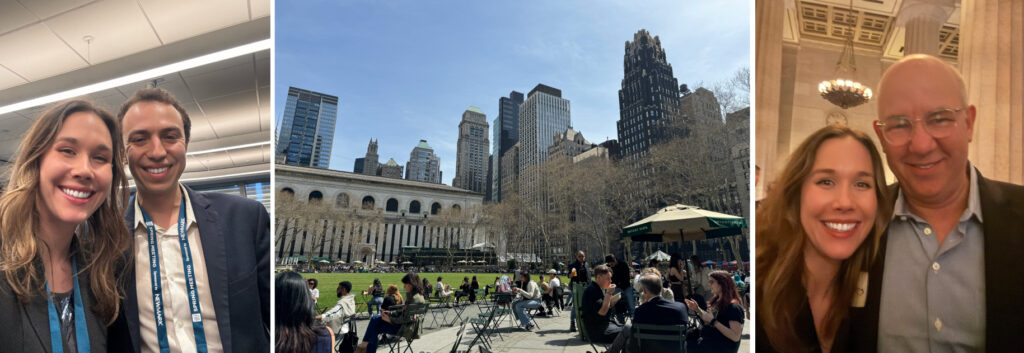
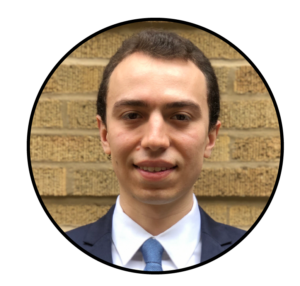
Yousuf Hafuda | Brookfield Properties 2023-24 Jeffrey Kahan Fellow
I had the privilege of attending the ULI Spring Meeting in NYC thanks to the Kahan Fellowship. Having previously attended the Fall Meeting in LA, I had the benefit of prior experience. Ultimately, I enjoyed it just as thoroughly as the Fall Meeting. I gained new insights, reconnected with old colleagues and connections, and made several valuable new connections. More importantly, I got a sense of current market sentiment, with the hindsight benefit of being able to compare against the general mood in the fall.
What I found most compelling was the contrast in sentiment between the Fall Meeting and the Spring Meeting. In the fall, it felt as though our industry was in free-fall (pun not intended) with no sense of when and where we would hit rock bottom. By contrast, during the spring, it felt like we were quickly approaching rock bottom with a conception of what that looked like. That being said, the adverse inflation report, which was released during the Spring Meeting, seemingly extended the timing of the downturn, and was a stark reminder of the tremendous impact and inherent unpredictability of the macroeconomic environment.
Focusing on commercial real estate more specifically, 2025 is expected to feature increased levels of capital deployment. Office continues to be the least favored sector. The sector must contend with oversupply, the persistence of remote work arrangements, and the changing nature of work. There is a sense that this dynamic will persist over the next several years, although certain contrarian investors with patient capital have begun transacting on the basis of historically low prices.
Retail, which previously occupied the position of the least favored asset class, is experiencing something of a renaissance. This is driven by strong consumer spending, little to no supply additions over the past several years, and the adaptability of owners to accommodate new consumer tastes. Hospitality remains in a middling position. Certain destination assets are performing exceptionally well, while central business district product continues to struggle, although with a marked recovery as tourists and business/group travel rebounds.
Meanwhile, industrial and residential retain their favored positions. However, industrial is showing certain signs of weakness, with modest increases in vacancy and declining rents in certain markets. This is largely driven by softening demand. Residential remains attractive, although many recent buyers find themselves in a challenging position to the extent that they purchased product at elevated pricing and took on excessive debt during the last few years. Certain sunbelt markets are also experiencing muted rent growth amid historically high supply additions.
Beyond the market insights gained at the conference, the IOPC Blue Product Council Day was once again the highlight of the experience. The quality of discussion was high, and the insights gained were valuable. The likelihood of interest rate cuts from the Federal Reserve this year is emerging as somewhat low. Particularly interesting was the indication that certain contrarian investors are beginning to look at investment opportunities within the office real estate sector. Industrial, long known as a favored asset class, is beginning to show warning signs, with certain geographic markets showing weakness. We had a fascinating presentation about the Signature Bank asset liquidation conducted by Newmark. We also had an informative presentation about a successful office to residential conversion conducted in Manhattan. Although this strategy is unlikely to work on a large scale, it remains a potential avenue to re-purpose aging office stock and structural oversupply of office real estate within cities. Although the current state of the commercial real estate market remains grim, the Spring Meeting injected some hope for what lies ahead. I join the industry in hoping that the future holds increased activity.
Finally, I would be remiss if I didn’t mention one of the best parts of the Fellowship, which was the opportunity to get to know Jane Acker a bit better. The two of us were able to go through the experience together, lean on one another for support, and form a mutually beneficial connection that will last far beyond the conclusion of our Fellowship. For that alone, and for the opportunity to meet many other wonderful people through this experience, I am eternally grateful.